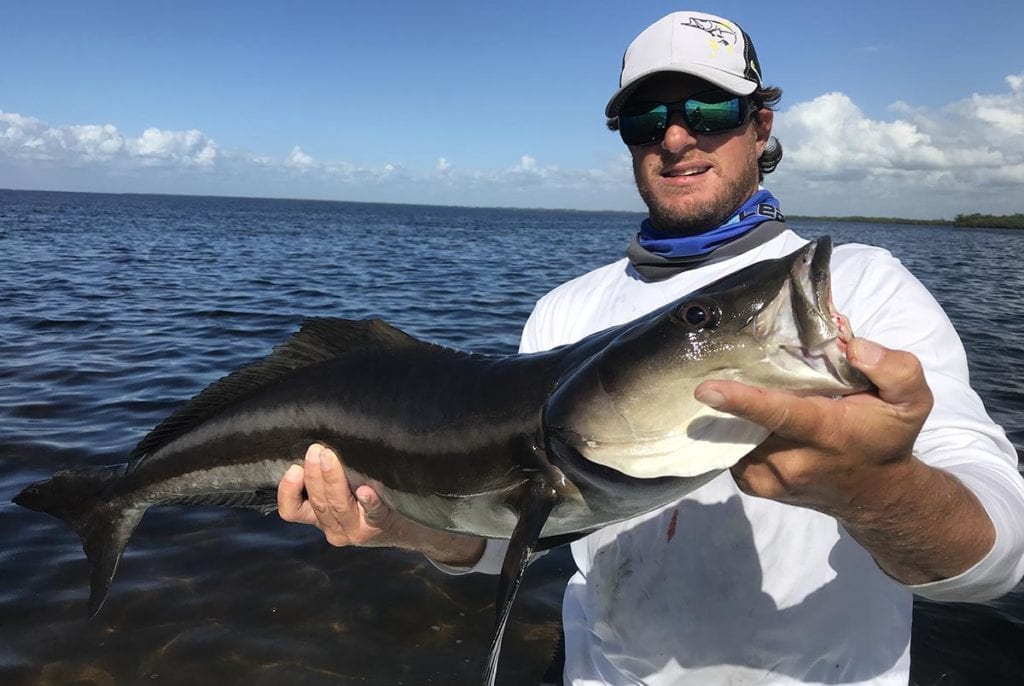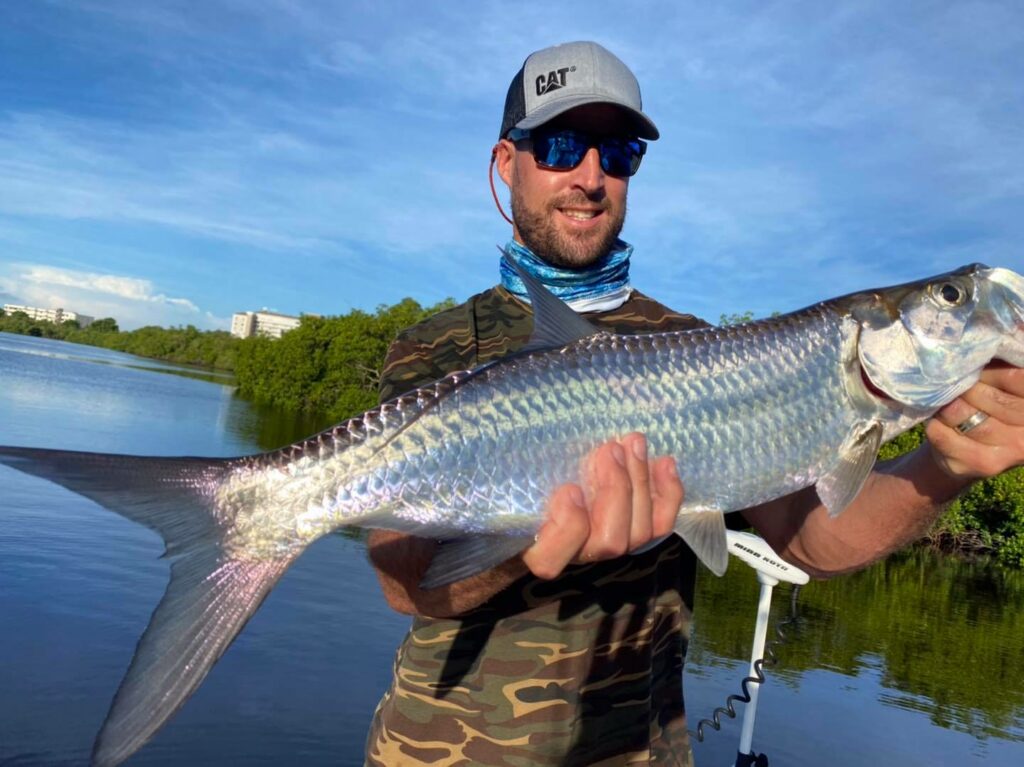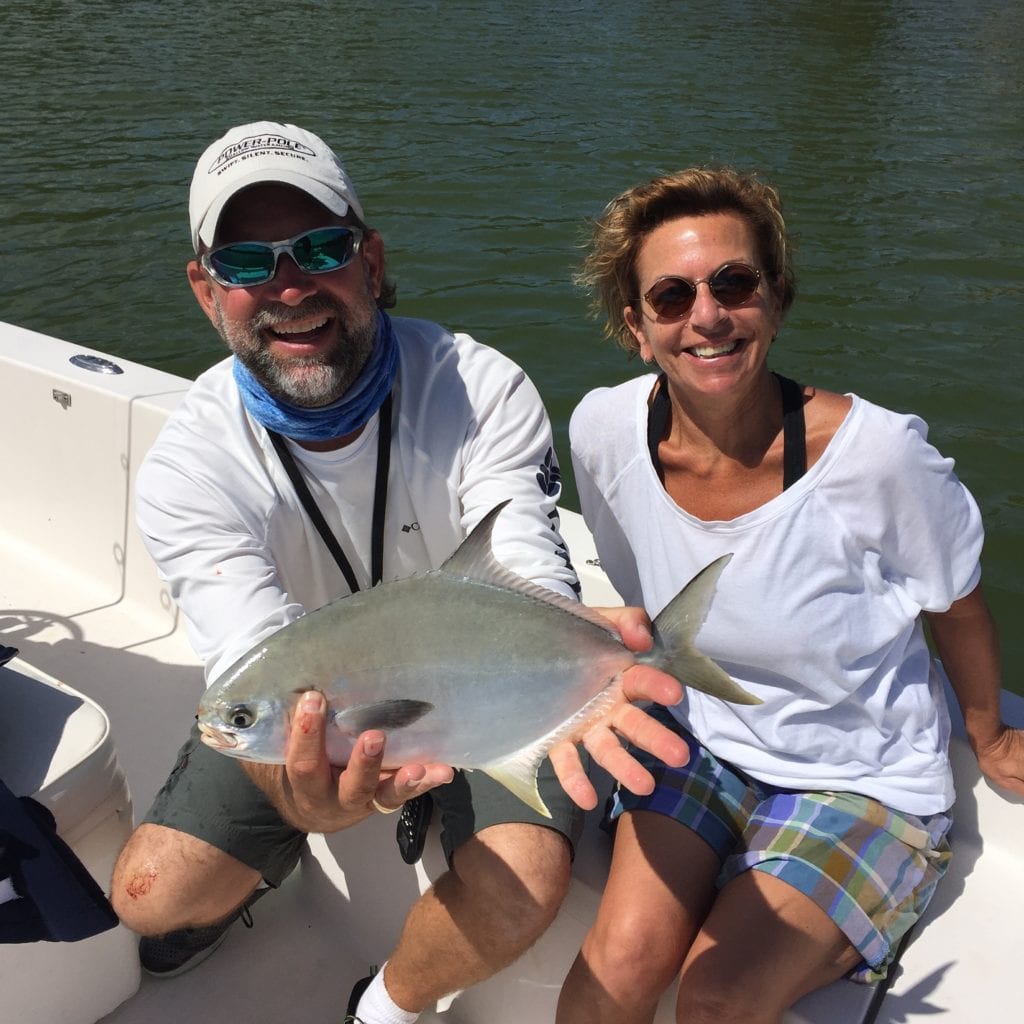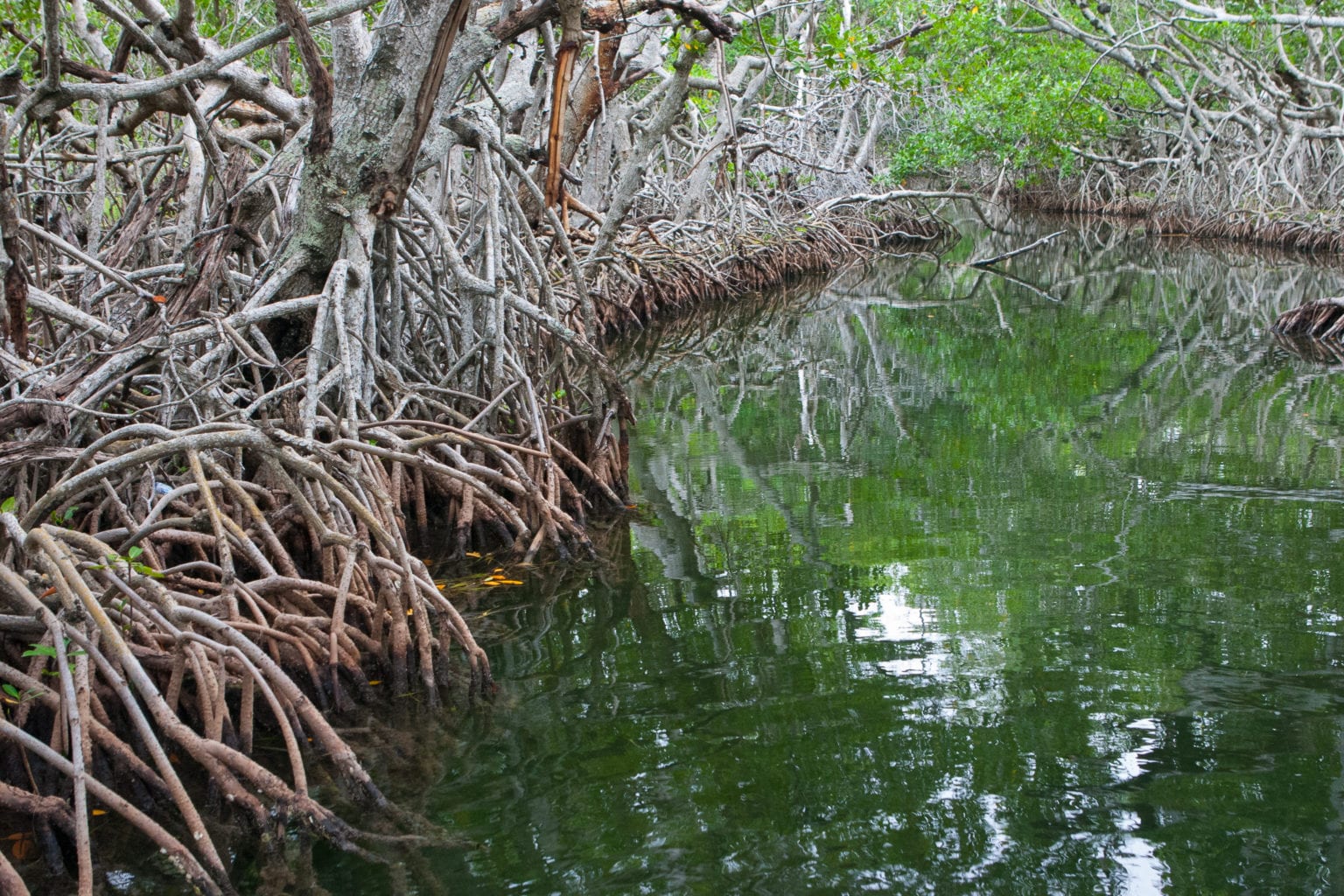
Spring is one of the most productive seasons for inshore fishing in the Everglades. As water temperatures rise, fish that spent the colder months in deeper, more stable environments move into shallower feeding zones. Baitfish activity increases, and stronger spring tides create prime feeding conditions for predatory fish. This seasonal shift brings a mix of resident species like snook, redfish, sea trout, and mangrove snapper, along with migratory fish such as tarpon, cobia, Spanish mackerel, jack crevalle, and various sharks.
For a fisherman, understanding how these seasonal changes affect fish behavior and knowing how to adapt to shifting conditions is essential for success. This guide covers everything needed to make the most of spring inshore fishing in the Everglades, from fish movement and feeding patterns to bait selection, tide strategies, and the best locations to target each species.
Species Breakdown and Their Spring Behavior
Each species in the Everglades responds differently to spring’s changing conditions. Understanding their behavior, where they hold, and how they feed is key to targeting them effectively.
Snook
Snook move from deep winter spots into shallower feeding areas, taking advantage of warming water and increased baitfish activity. Early in the season, they stage near passes and deeper creeks, then gradually push into mangroves and shorelines as the season progresses. They are most aggressive during moving tides, positioning themselves around structure to ambush prey. Live pilchards and mullet are highly effective, while artificial lures such as jerkbaits, topwater plugs, and paddle tails work well in shallower water.
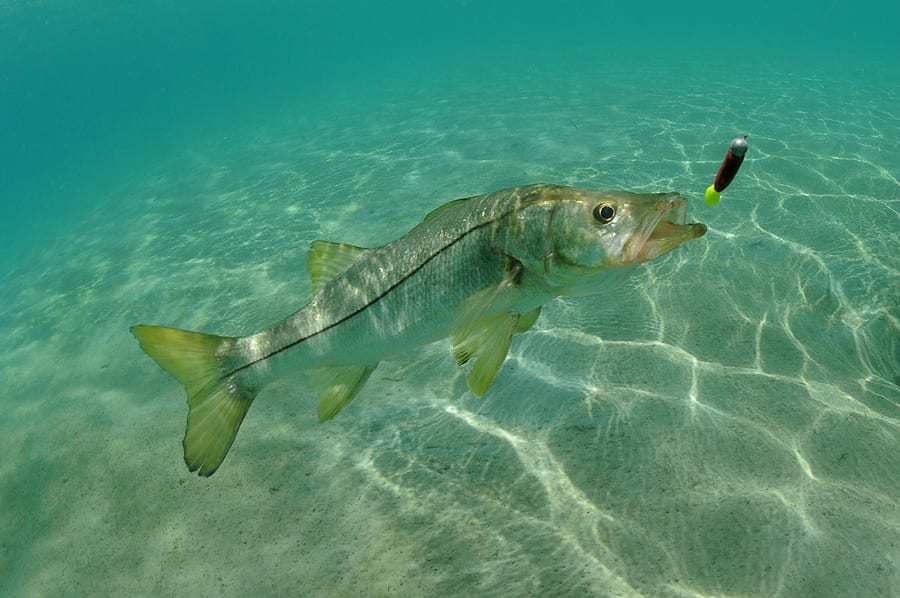
Redfish
Redfish spread out across grass flats, oyster bars, and mangrove edges, taking advantage of abundant bait and warming conditions. They aggressively feed on crabs, shrimp, and cut bait, often rooting along the bottom for food. Gold spoons and soft plastics rigged on jig heads work well for covering water, while live shrimp, mullet, or cut bait are effective when fishing around structure or along the edges of sandbars and oyster beds.
Tarpon
Tarpon arrive in deeper passes and channels as they begin their seasonal migration. They are most active on tide changes, when moving water pushes bait through natural choke points. These fish respond well to live mullet and crabs, but large soft plastics can also produce strikes when worked slowly through feeding areas. As temperatures continue rising, tarpon push into more open bays and shorelines, offering more sight-fishing opportunities in calm conditions.
Sea Trout
Sea trout transition onto grass flats and potholes, where they hunt for shrimp and small baitfish. They prefer areas with clean, moving water and are most aggressive in the early morning or late afternoon. Live shrimp under a popping cork is one of the most effective methods, while soft plastics and twitch baits allow fishermen to cover more water and locate active fish. Trout often hold near the edges of sand patches within seagrass beds, using the change in bottom composition to ambush prey.

Mangrove Snapper
Mangrove snapper hold near docks, rock piles, oyster bars, and submerged structure, taking advantage of the current to intercept small baitfish and shrimp. They feed aggressively on live shrimp and small baitfish, often striking quickly before retreating to cover. Fishing close to structure with small jigs, freelined shrimp, or cut bait on a light leader produces the best results.
Tripletail
Tripletail are commonly found near floating debris, trap buoys, and other surface structures. They are opportunistic feeders, ambushing shrimp and small baitfish that drift past. Live shrimp is the most effective bait, while small jigs and soft plastics can be used for sight-casting when tripletail are visible near the surface. They tend to stay motionless, making them easy to miss unless carefully scanned for.
Spanish Mackerel
Spanish mackerel move through the Everglades in spring, feeding on schools of pilchards and glass minnows. They prefer fast-moving baits and lures that imitate small fish, making silver spoons, jigs, and small diving plugs highly effective. They often hold near passes and channels where baitfish are concentrated, striking aggressively during tide shifts. A fast retrieve is key when targeting mackerel, as they prefer chasing down moving prey.
Sharks
Spring brings an influx of sharks into the Everglades, with species such as blacktips, bulls, and bonnetheads becoming more active in inshore waters. Blacktips and bulls hunt in channels, passes, and along sandbars, feeding on mullet, jacks, and other baitfish. Bonnetheads stay closer to shallow flats, searching for crabs and shrimp. Sharks can be targeted using live or cut bait, with fresh mullet and ladyfish being particularly effective. Fishing during an outgoing tide in deeper channels increases the chances of hooking into larger specimens.
Cobia
Cobia migrate through passes and nearshore structures, feeding on baitfish that move with the tides. They often follow rays, sharks, or floating debris, using them as mobile cover while hunting. Live bait such as pinfish, threadfin herring, and pilchards work best, but they also strike bucktail jigs when presented near the surface. Sight-fishing is an effective technique when conditions allow, as cobia frequently swim just beneath the surface.
How Spring Conditions Affect Fishing
As winter transitions into spring, several environmental changes directly impact inshore fishing. These factors determine where fish will be, how they behave, and what techniques will be most effective.
Water Temperature
Water temperature is one of the biggest factors influencing fish movement and feeding. In the Everglades, when temperatures rise into the mid-70s, many inshore species leave the deeper holes and channels they occupied during winter and move toward flats, shorelines, and mangrove-lined creeks.
- Snook and redfish become more aggressive as their metabolism speeds up, making them more likely to strike both artificial lures and live bait.
- Tarpon and cobia begin showing up in deeper channels and passes, drawn by warming waters and an increase in available prey.
- Sea trout spread out across the grass flats, where they hunt small baitfish and shrimp.
Because fish are more active in warmer water, early spring fishing often starts slow in the mornings but improves as the sun heats up shallow areas. Later in the season, feeding windows stretch throughout the day.
Baitfish Activity
Spring marks a major shift in baitfish movement, with schools of mullet, pilchards, and shrimp becoming more abundant. As baitfish populations grow, predatory fish become more aggressive, leading to some of the best fishing of the year.
- Mullet run along shorelines and through channels, drawing in snook, tarpon, and jacks.
- Pilchards move through passes and shallow bays, becoming a prime food source for species like Spanish mackerel and cobia.
- Shrimp activity peaks, especially on outgoing tides when they get flushed out of the backwaters, providing an easy meal for trout, snapper, and redfish.
Following baitfish is one of the most reliable ways to locate feeding fish. Areas with concentrated bait activity—like grass edges, mangrove shorelines, or deep channels—will often hold multiple species.
Longer Daylight Hours
As spring progresses, longer days provide extended feeding windows. Unlike in winter, when fish are most active during the warmest part of the day, spring allows for strong morning and evening bites, with some species feeding throughout midday, especially in shallower areas where sunlight warms the water.
- Snook, redfish, and trout take advantage of midday warmth in the shallows.
- Tarpon and cobia feed more consistently throughout the day as water temperatures stabilize.
Longer light periods also mean that morning and evening topwater action becomes more viable, especially for aggressive species like snook and jacks.
Wind and Weather Changes
Spring can bring unpredictable wind patterns and occasional late-season cold fronts, both of which influence fish behavior.
- Wind affects water clarity and can push fish into protected areas. Murky water often makes predators more aggressive, as they rely on vibrations rather than sight to find food.
- Cold fronts temporarily slow down feeding. If a front moves through, fish may become sluggish for a day or two before returning to normal activity.
A fisherman should adjust by seeking out wind-protected backwaters or deeper structure where fish may hold until conditions stabilize.
The Role of Tides in Spring Fishing
Spring tides are stronger than winter tides due to seasonal shifts in lunar cycles and weather patterns. These more pronounced tidal movements create better feeding opportunities, and understanding how fish react to different tide phases is key to improving success.
Incoming Tide
An incoming tide pushes baitfish and shrimp into shallower feeding areas, triggering aggressive feeding behavior.
- Snook, redfish, and trout move onto shallow flats, oyster bars, and creek mouths, taking advantage of bait getting pushed toward shorelines.
- Mangrove snapper position themselves near submerged structure to intercept passing prey.
Fishing during an incoming tide is most productive near shorelines, grass flats, and mangrove edges where bait is most concentrated.
Outgoing Tide
An outgoing tide flushes bait out of the backcountry and into deeper water, where larger predators wait.
- Tarpon, cobia, and jack crevalle position themselves in passes and deeper channels, using the current to ambush prey.
- Snapper and trout feed along drop-offs and channel edges, where bait is pulled into deeper water.
Fishing outgoing tides requires targeting current breaks, channel mouths, and areas where water movement funnels bait through narrow areas.
Slack Tide
Slack tide—when water movement slows between tidal changes—tends to be the least productive time to fish. Some species, like mangrove snapper and trout, may still feed in deeper channels, but most predatory fish become less active.
Baitfish Movement and How to Track Them
Locating baitfish is one of the best ways to find active feeding fish. Different bait species move through the Everglades at different times and locations.
- Mullet stay near shorelines and deeper channels, attracting snook, tarpon, and jacks.
- Pilchards concentrate in passes and shallow bays, drawing in mackerel and cobia.
- Shrimp are most abundant on outgoing tides, when they get flushed from the backwaters.
Tracking baitfish can be done by:
- Watching for diving birds, which often indicate bait presence.
- Looking for nervous bait or surface splashes, where predators are actively feeding.
- Identifying natural bait collection areas like grass edges, oyster bars, and channel drop-offs.
Best Fishing Locations for Spring
The Everglades offer a wide variety of productive inshore fishing spots. Some of the best areas for spring fishing include:
Mangrove shorelines & creeks – Snook, redfish, snapper.
As fish move out of deeper winter refuges, they take advantage of the cover and structure that mangrove shorelines and creeks provide. Snook use mangrove roots as ambush points, waiting for baitfish and shrimp to get pushed along the shoreline by the tide. Redfish move into these areas as well, feeding on crabs, shrimp, and small baitfish along muddy banks and oyster-laden creek mouths. Mangrove snapper hold close to submerged structure, waiting for small bait to drift by in the current. Higher tides push fish deeper into the mangroves, while lower tides concentrate them along the edges where casting to pockets of structure produces the best results.
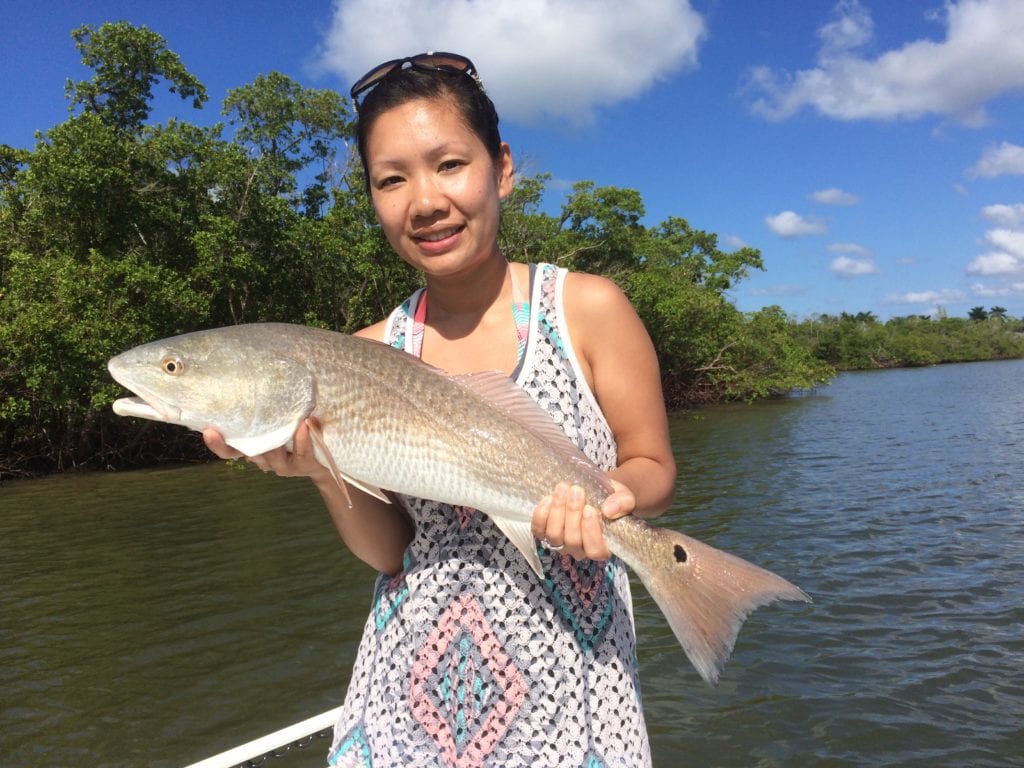
Grass flats & potholes – Sea trout, pompano.
As spring progresses, sea trout and pompano spread across the grass flats, feeding on shrimp and small baitfish that gather in the seagrass. Potholes—sandy depressions in the flats—provide natural feeding zones where fish ambush prey. Sea trout are most active during morning and evening, but as water temperatures rise, they will continue feeding throughout the day if there is enough water movement. Pompano favor the sandy bottoms near these flats, where they sift through the sediment in search of crustaceans. Drifting or wading across a flat is the best way to cover water, and using live shrimp or artificial lures that imitate small baitfish will trigger consistent strikes.
Oyster bars & rock piles – Redfish, snapper.
Redfish and mangrove snapper are drawn to oyster bars and submerged rock piles because these structures hold baitfish, shrimp, and crabs. Redfish often feed along the edges of oyster bars, using the uneven surface to hunt for crabs and shrimp that get exposed by the moving tide. Mangrove snapper stay closer to the structure itself, waiting for bait to drift by in the current. Outgoing tides produce the best bite in these areas as the moving water forces prey off the structure and into open water, making it easier for predators to strike.
Passes & deeper channels – Tarpon, cobia, sharks.
As water temperatures rise, larger migratory species such as tarpon, cobia, and sharks move into passes and deeper channels. These areas act as highways for fish traveling between inshore and nearshore waters, with strong tidal currents funneling baitfish through confined spaces. Tarpon hold in deeper holes, staging as they prepare for their migration, while cobia follow baitfish along channel edges and near submerged structures. Sharks, including bull sharks and blacktips, patrol these waters, hunting along drop-offs and sandbars. Fishing these areas effectively requires adjusting bait depth to match where fish are holding in the water column, with live mullet, crabs, and pilchards being the top choices for most of these species.
Challenges of Spring Fishing and How to Overcome Them
Spring fishing presents a few challenges, but they can be managed with the right approach.
Wind & Water Clarity
Spring winds can churn up sediment, reducing visibility and making sight fishing difficult. Fish tend to rely more on vibrations in these conditions, so using lures that create noise or movement—such as paddle tails, topwater plugs, or rattling crankbaits—can improve results. If water clarity is poor, fishing in protected backwaters or closer to structure where fish feel more secure can also lead to better success.
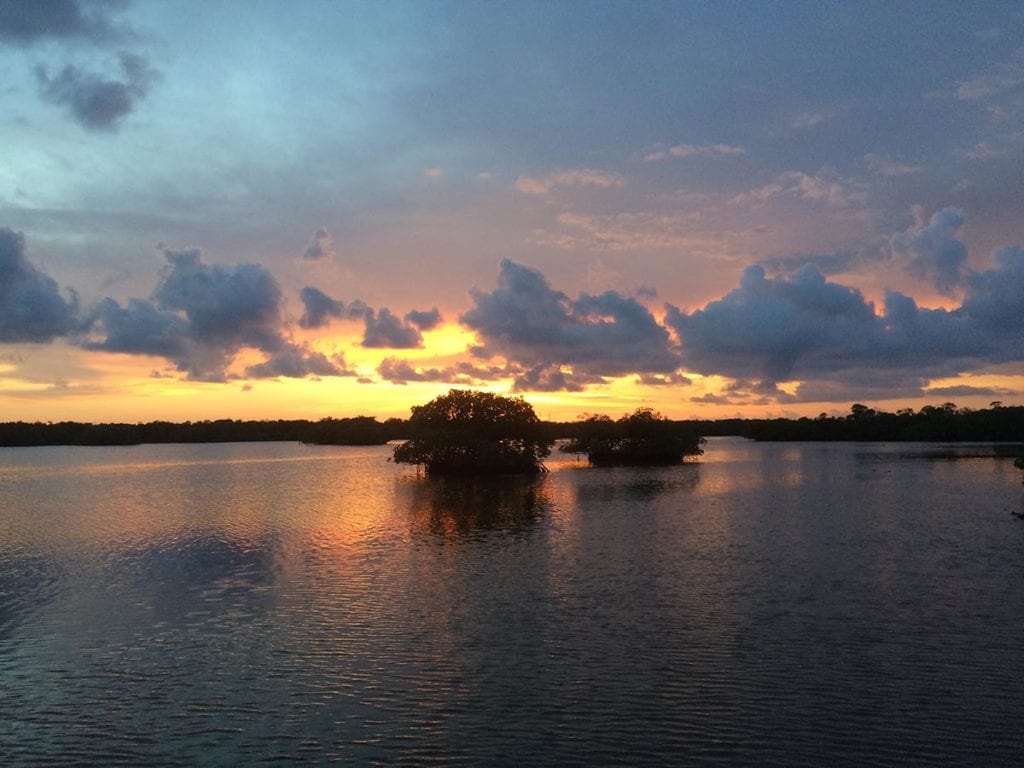
Increased Fishing Pressure
Spring attracts more fishermen to the Everglades, which can make heavily trafficked areas more difficult to fish. Finding less-pressured spots requires moving deeper into creeks, fishing further off main channels, or targeting less obvious structure. Areas that require a bit more effort to reach, such as winding mangrove backwaters or tucked-away oyster bars, often hold fish that aren’t as easily spooked.
Timing the Tides
Tide movement plays a bigger role than time of day in determining when fish will be feeding. Stronger spring tides create excellent feeding opportunities, but they also mean that fish may only be active for specific windows. Prioritizing fishing during incoming or outgoing tides, rather than focusing only on sunrise or sunset, leads to more consistent results. In some cases, waiting for the right tide shift is more effective than fishing all day.
Spring Inshore Fishing in the Everglades with Chasin’ Tails
Spring fishing in the Everglades is at its peak, with warming waters bringing more fish into the shallows and tidal movement creating nonstop feeding opportunities. Snook are ambushing bait along the mangrove edges, redfish are patrolling oyster bars and grass flats, and tarpon are staging in deeper channels, all taking advantage of the seasonal shift. Whether fishing the backcountry for snook and redfish or working the passes where bigger fish are feeding, this is the time of year when everything lines up for consistent action.
Chasin’ Tails runs trips through these waters every day, putting fishermen on fish while navigating the tides, structure, and bait movements that make the difference between a slow day and nonstop hookups. The conditions are only getting better, and the fish are already where they need to be. Book your trip with Chasin’ Tails today and get on the water while the bite is at its best.

